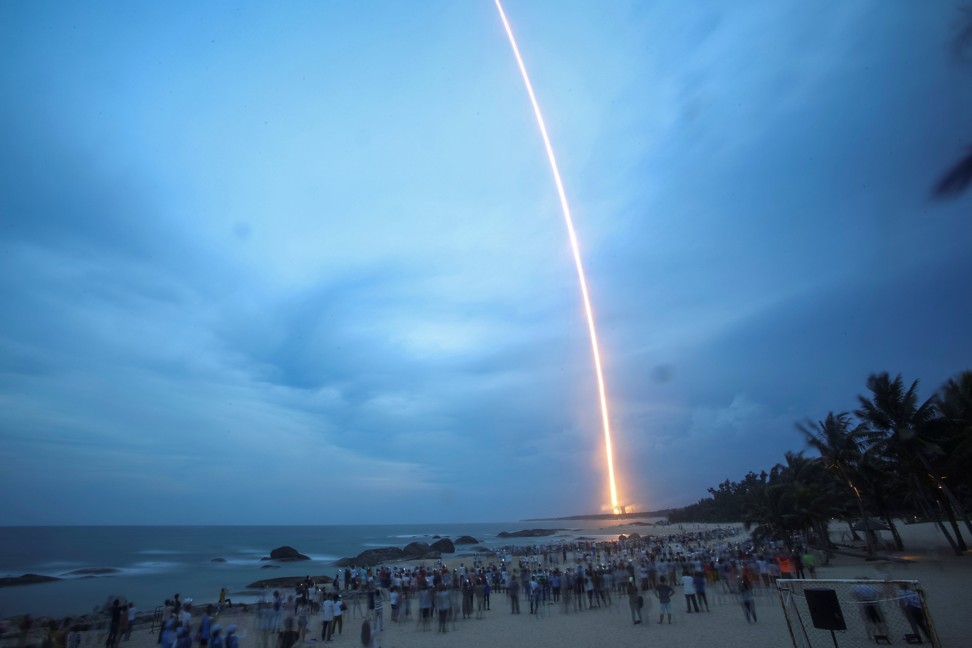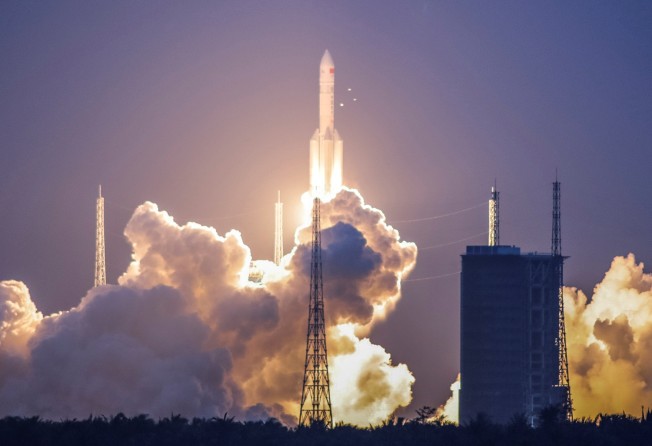
China’s failed Long March 5 rocket ‘choked to death’, but space mission expected to resume this year
Problem that caused heavy-lift rocket to plunge into Pacific Ocean in July has been resolved, official report says

The failure of China’s most powerful rocket, which plunged into the Pacific Ocean soon after launch last summer, was caused by an oxygen supply problem, an expert said on Monday after the release of the findings of an official investigation.
According to a short statement posted on the website of the State Administration of Science, Technology and Industry for National Defence, just six minutes after blasting off from the Wenchang Space Launch Centre in Hainan province on July 2, the first stage of the heavy-lift Long March 5 rocket “suddenly lost a significant amount of thrust”.
The problem was caused by a turbofan in one of the main engines, the statement said.
“Under the environment of sophisticated pressure and heat, certain structures [on the turbo system] experienced abnormal changes,” it said, without elaborating.
The failure of the rocket was seen as a huge setback for China’s space programme, including the deployment of super-heavy military satellites, the construction of a space station and collecting samples from the moon. However, the government said on Monday that the problem had been resolved and that a new generation of the Long March 5 rocket was in production and would be ready to launch, on an unspecified mission, by the end of the year.
A scientist at Beihang University’s School of Astronautics in Beijing explained that turbofans in rocket engines perform a similar function to the lungs in the human body. Their job, he said, was to blow a mixture of liquid oxygen and hydrogen into a combustion chamber, which was then ignited to produce thrust.
When the fan failed it was “like flying with a collapsed lung,” said the scientist, who asked not to be named because of the sensitivity of the issue. “It literally choked to death.”
Despite the brevity of the official report, the rocket scientist said its release meant experts had reached consensus on the rocket’s problems and that development work could resume.
The statement did not say how long it took to identify the cause of the problem, but said scientists used computer modelling and ground experiments to simulate what happened and confirm their findings. The turbofan has since been redesigned and the improved version has undergone and passed several rounds of testing, it said.
The Long March 5 rocket, which uses some of the largest liquid rocket engines in service anywhere in the world, has the power to lift a 25-tonne payload – such as the core module of a space station – into a low Earth orbit, or send a 15-tonne satellite into a geostationary orbit, more than 30,000 kilometres above the planet.
Only China and Russia now make such powerful rocket engines. Even the United States’ Atlas V launch system, which is used for heavy military satellites, is powered up by an RD-180 engine made in Russia.
Once back in service, the Long March 5 will be used to power China’s Chang’e 5 mission to land an unmanned rover on the moon and return with rock and soil samples. The mission was originally expected to take place next year, but the government has not recently confirmed that time frame.
Liang Xiaohong, a rocket scientist and former vice-president of the China Academy of Launch Vehicle Technology, said on state television early this year that the failure of the Long March 5 had had a “huge impact” on China’s ambitions in space.
For instance, he said, the scheduled 2020 launch of the core module of China’s space station might be delayed, while the launch of military satellites, used to track the movements of other countries’ aircraft carrier fleets, might also be affected.
China had ambitious goals in space, but their achievement had been severely limited by the quality and shortage of launch vehicles, Liang said.
The country planned to carry out 35 space launches this year, about the same as the US, he said, but he was “not sure whether this can be achieved”.
